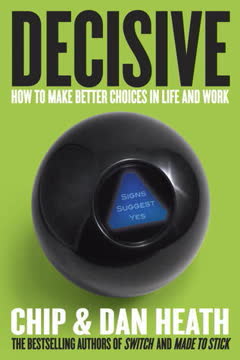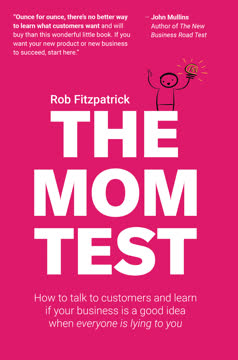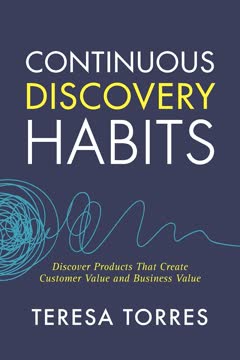가지 주요 요점
1. Jobs-to-be-Done 이론: 고객의 니즈를 이해하는 혁신적인 접근법
Jobs-to-be-Done 이론은 (i) 고객의 모든 니즈를 분류, 정의, 포착, 조직화하는 프레임워크를 제공하며, (ii) 고객이 정의한 성과 지표(원하는 결과 진술의 형태로)를 Job-to-be-Done에 연결합니다.
혁신의 패러다임 전환. Jobs-to-be-Done 이론은 제품이나 인구 통계가 아닌 고객이 달성하려는 근본적인 작업에 초점을 맞추어 기업이 혁신에 접근하는 방식을 혁신합니다. 이 관점은 기업이 다음을 가능하게 합니다:
- 모든 고객의 니즈를 체계적으로 식별
- 고객이 성공을 측정하는 지표 이해
- 충족되지 않은 니즈를 더 효과적으로 해결하는 솔루션 개발
안정성과 보편성. 이 이론은 작업이 시간과 지리적 위치에 걸쳐 안정적으로 유지된다고 주장하며, 장기적인 혁신 전략을 위한 신뢰할 수 있는 기반을 제공합니다. 이는 제품과 기술의 끊임없이 변화하는 특성과 대조되며, 기업이 다음을 가능하게 합니다:
- 지속적인 가치 제안 창출
- 전 세계적으로 관련성 있는 솔루션 개발
- 제품 주기 전반에 걸쳐 일관된 혁신
2. Jobs-to-be-Done 니즈 프레임워크: 고객의 니즈 분류 및 정의
작업은 고객이 실행하려는 전체 작업을 설명하는 반면, 결과는 고객이 작업을 실행하면서 성공과 가치를 측정하는 지표입니다.
포괄적인 니즈 분석. Jobs-to-be-Done 니즈 프레임워크는 고객의 니즈를 이해하고 분류하는 구조화된 접근 방식을 제공하며, 다음을 포함합니다:
- 핵심 기능적 Job-to-be-Done
- 핵심 기능적 작업에 연결된 원하는 결과
- 관련 작업
- 감정적 및 사회적 작업
- 소비 체인 작업
- 구매자의 재정적 원하는 결과
실행 가능한 통찰력. 고객의 니즈를 이러한 별개의 범주로 나누어 기업이 다음을 가능하게 합니다:
- 더 목표 지향적이고 효과적인 솔루션 개발
- 고객의 기능적 및 감정적 측면 모두 해결
- 구매부터 폐기까지 전체 고객 경험 개선
3. Outcome-Driven Innovation (ODI): Jobs 이론을 실천에 옮기기
Outcome-Driven Innovation은 고객이 작업을 더 잘 수행하거나 더 저렴하게 수행할 수 있도록 새로운 솔루션을 구상하고 발명할 수 있게 하는 전략 및 혁신 프로세스입니다.
체계적인 혁신 프로세스. ODI는 Jobs 이론을 혁신을 위한 실용적이고 단계별 방법론으로 변환하며, 다음을 포함합니다:
- 고객 정의
- Job-to-be-Done 정의
- 고객 니즈 발견
- 기회 세그먼트 찾기
- 가치 제안 정의
- 경쟁 분석 수행
- 혁신 전략 수립
- 숨겨진 성장 기회 타겟팅
- 시장 전략 수립
- 제품 전략 수립
데이터 기반 의사 결정. 이 프로세스를 따름으로써 기업은 다음을 가능하게 합니다:
- 혁신에서의 추측 감소
- 제품 개발을 고객의 니즈와 일치
- 시장 성공 가능성 증가
4. 고객의 원하는 결과 발견: 성공적인 혁신의 열쇠
원하는 결과 진술은 고객이 핵심 기능적 작업의 각 단계를 거치면서 성공과 가치를 측정하는 방법을 정확히 설명합니다.
정확한 니즈 정의. 원하는 결과 진술은 고객의 니즈를 측정 가능하고 실행 가능한 형식으로 포착하기 위해 신중하게 구성됩니다. 이러한 진술은:
- 특정 구조를 따름: 개선 방향 + 성과 지표 + 제어 대상 + 상황 명확화
- 특정 제품 기능이 아닌 기본적인 니즈에 초점
- 혁신 노력을 위한 명확한 목표 제공
포괄적인 작업 분석. 전체 작업 프로세스를 매핑하고 각 단계에 대한 원하는 결과를 포착함으로써 기업은 다음을 가능하게 합니다:
- 이전에 간과된 혁신 기회 식별
- 전체 작업을 해결하는 솔루션 개발
- 더 전체적이고 효과적인 제품 또는 서비스 창출
5. 결과 기반 세분화: 숨겨진 시장 기회 발견
고유한 미충족 니즈 세트를 가진 고객 세그먼트를 발견하는 유일한 방법은 미충족 니즈를 중심으로 시장을 세분화하는 것입니다.
전통적인 세분화를 넘어서. 결과 기반 세분화는 인구 통계적 또는 심리적 범주화를 넘어 미충족 니즈를 기반으로 그룹을 식별합니다. 이 접근법은:
- 고유한 기회를 가진 숨겨진 세그먼트 공개
- 시장 역학에 대한 더 정확한 그림 제공
- 더 목표 지향적이고 효과적인 혁신 전략 가능
데이터 기반 시장 분석. 이 과정은 다음을 포함합니다:
- 원하는 결과 진술로 모든 고객 니즈 포착
- 니즈 우선순위를 정하기 위한 정량적 연구 수행
- 유사한 미충족 니즈를 가진 세그먼트를 식별하기 위한 요인 및 클러스터 분석 사용
- 미충족 니즈를 유발하는 근본적인 요인을 이해하기 위한 세그먼트 프로파일링
6. Jobs-to-be-Done 성장 전략 매트릭스: 올바른 혁신 전략 선택
새로운 제품과 서비스는 고객이 작업을 더 잘 수행하거나 더 저렴하게 수행할 수 있도록 도와주는 경우 시장에서 승리합니다.
전략적 혁신 프레임워크. 성장 전략 매트릭스는 시장 상황에 따라 가장 적절한 혁신 전략을 선택하는 데 도움을 줍니다:
- 차별화 전략: 더 좋지만 더 비쌈
- 지배적 전략: 더 좋고 더 저렴함
- 파괴적 전략: 더 나쁘지만 더 저렴함
- 개별 전략: 더 나쁘고 더 비쌈(틈새 상황)
- 지속적 전략: 약간 더 좋거나 더 저렴함
정보에 입각한 전략 선택. 시장에서 미충족 및 과잉 충족 세그먼트를 이해함으로써 기업은 다음을 가능하게 합니다:
- 가장 효과적인 성장 전략 선택
- 제품 개발을 시장 기회와 일치
- 성공적인 혁신 가능성 증가
7. ODI 구현: 예측 가능한 혁신 성공을 위한 조직 변환
결과 기반 조직을 구축하는 것은 세 단계로 가장 잘 수행됩니다: I: 고객의 Job-to-be-Done 이해, II. 시장에서 숨겨진 기회 발견, III. 새로운 고객 통찰력을 사용하여 성장 촉진
조직 변환. ODI를 구현하는 것은 다음을 포함합니다:
- 내부 ODI 실무자 팀 구성
- 혁신 센터 오브 엑설런스 설립
- 선택된 시장에 Jobs 이론 및 ODI 관행 적용
단계별 구현 접근법. 세 단계 프로세스는 기업이 다음을 가능하게 합니다:
- 고객 작업과 니즈에 대한 깊은 이해 획득
- 정량적 연구를 통해 숨겨진 시장 기회 발견
- 개선된 시장 및 제품 전략을 통해 통찰력을 성장 촉진에 적용
이 접근 방식을 따름으로써 조직은 혁신 프로세스를 체계적으로 변환하여 더 예측 가능하고 성공적인 결과를 이끌어낼 수 있습니다.
마지막 업데이트 날짜:
FAQ
What's "Jobs to be Done: Theory to Practice" about?
- Focus on Innovation: The book by Anthony W. Ulwick focuses on transforming innovation from a chance-based endeavor to a predictable process using the Jobs-to-be-Done theory.
- Outcome-Driven Innovation: It introduces Outcome-Driven Innovation (ODI), a process that links customer needs to product development, ensuring that new products meet real market demands.
- Framework for Success: The book provides a framework for understanding customer needs and creating products that fulfill those needs better and/or more cheaply than competitors.
- Practical Application: It offers practical steps and case studies to help companies implement the Jobs-to-be-Done theory in their innovation processes.
Why should I read "Jobs to be Done: Theory to Practice"?
- Improve Innovation Success: The book claims an 86% success rate for innovation projects using its methods, compared to the industry average of 17%.
- Structured Approach: It provides a structured approach to understanding customer needs, which can lead to more successful product development.
- Real-World Examples: The book includes case studies from companies like Microsoft and Bosch, demonstrating the practical application of its theories.
- Comprehensive Guide: It serves as a comprehensive guide for companies looking to improve their innovation processes and achieve growth.
What are the key takeaways of "Jobs to be Done: Theory to Practice"?
- Customer-Centric Innovation: Focus on what jobs customers are trying to get done, rather than on the products themselves.
- Outcome-Driven Process: Use customer-defined metrics to guide product development and innovation strategies.
- Segmentation and Strategy: Discover underserved market segments and tailor strategies to meet their specific needs.
- Predictable Success: By understanding and addressing customer needs, companies can predictably create successful products.
What is the Jobs-to-be-Done theory?
- Core Concept: The theory posits that customers "hire" products to get specific jobs done, focusing on the desired outcomes rather than the product itself.
- Stable Over Time: Jobs are stable over time, unlike products or technologies, which change and evolve.
- Universal Application: The theory applies across different geographies and industries, as people everywhere have similar jobs they need to get done.
- Foundation for Innovation: It serves as a foundation for developing products that truly meet customer needs.
How does Outcome-Driven Innovation (ODI) work?
- Customer Metrics: ODI begins with identifying the metrics customers use to measure success in getting a job done.
- Quantitative Research: It employs unique quantitative research methods to analyze markets and uncover hidden opportunities.
- Segmentation and Strategy: The process includes segmenting markets based on unmet needs and formulating strategies to address them.
- High Success Rate: ODI claims a high success rate by aligning product development with customer-defined metrics.
What are the types of customer needs in the Jobs-to-be-Done Needs Framework?
- Core Functional Job: The primary task or goal the customer is trying to accomplish.
- Desired Outcomes: Metrics customers use to measure success in executing the core functional job.
- Related Jobs: Other functional jobs that are important to the customer while executing the core job.
- Emotional and Social Jobs: How customers want to feel or be perceived while getting the job done.
What is the Jobs-to-be-Done Growth Strategy Matrix?
- Five Strategies: The matrix outlines five growth strategies: Differentiated, Dominant, Disruptive, Discrete, and Sustaining.
- Market Positioning: It helps companies understand how to position their products based on whether they get a job done better and/or more cheaply.
- Targeting Segments: The matrix guides companies in targeting underserved or overserved market segments.
- Strategic Decision-Making: It provides a framework for making strategic decisions about product development and market entry.
What are some case studies mentioned in "Jobs to be Done: Theory to Practice"?
- Microsoft: Improved its Software Assurance offering by aligning it with customer needs, leading to increased revenue and customer satisfaction.
- Bosch: Successfully entered the North American circular saw market by addressing 14 underserved outcomes, resulting in a top-selling product.
- Kroll Ontrack: Used ODI to dominate the electronic document discovery market by focusing on customer jobs and outcomes.
- Arm & Hammer: Achieved over 30% revenue growth by realigning its market strategy around customer outcomes.
How can companies become ODI practitioners?
- Training and Tools: Companies can train internal teams to become ODI practitioners, using tools and templates provided by Strategyn.
- Project Execution: Practitioners are responsible for executing ODI projects, from defining customer needs to formulating market strategies.
- Skill Requirements: Practitioners need skills in qualitative and quantitative research, data analysis, and strategic planning.
- Organizational Transformation: By adopting ODI, companies can transform their innovation processes and achieve predictable success.
What is the role of quantitative research in ODI?
- Data Collection: Quantitative research gathers statistically valid data to inform market and product strategies.
- Segmentation Analysis: It helps discover outcome-based segments with unique unmet needs.
- Competitive Analysis: Quantitative data is used to evaluate how well competing products satisfy customer needs.
- Opportunity Identification: The research identifies which customer needs are underserved, guiding innovation efforts.
What are the best quotes from "Jobs to be Done: Theory to Practice" and what do they mean?
- "Innovation cannot be left to chance." This emphasizes the need for a structured, predictable approach to innovation.
- "People buy products and services to get a job done." Highlights the core principle of Jobs-to-be-Done theory, focusing on customer needs rather than products.
- "Outcome-Driven Innovation replaces luck with a predictable process." Stresses the reliability and effectiveness of the ODI process in achieving innovation success.
- "Knowing all the customer’s needs changes everything." Underlines the importance of understanding customer needs for successful product development.
How does "Jobs to be Done: Theory to Practice" redefine the language of innovation?
- Common Language: The book introduces a common language for innovation, centered around customer jobs and outcomes.
- Customer-Centric Terms: It redefines traditional innovation terms from a customer-centric perspective.
- Framework and Definitions: Provides clear definitions and frameworks for understanding and discussing innovation.
- Organizational Alignment: A common language helps align teams and departments around a shared understanding of customer needs and innovation goals.
리뷰
Jobs to be Done은 다양한 평가를 받고 있다. 일부는 고객의 필요에 초점을 맞춘 실용적인 혁신 접근법을 칭찬한다. 그러나 많은 사람들은 이 책이 지나치게 자기 홍보적이고 반복적이며, 구체적인 실행 도구가 부족하다고 비판한다. 독자들은 핵심 개념을 높이 평가하지만 실행이 부족하다고 느낀다. 여러 리뷰어들은 이 책이 저자의 컨설팅 서비스를 광고하는 것처럼 느껴진다고 언급한다. 일부는 이 프레임워크에서 가치를 찾지만, 다른 사람들은 기존의 제품 개발 지혜를 단순히 재포장한 것에 불과하다고 주장한다.
Similar Books














